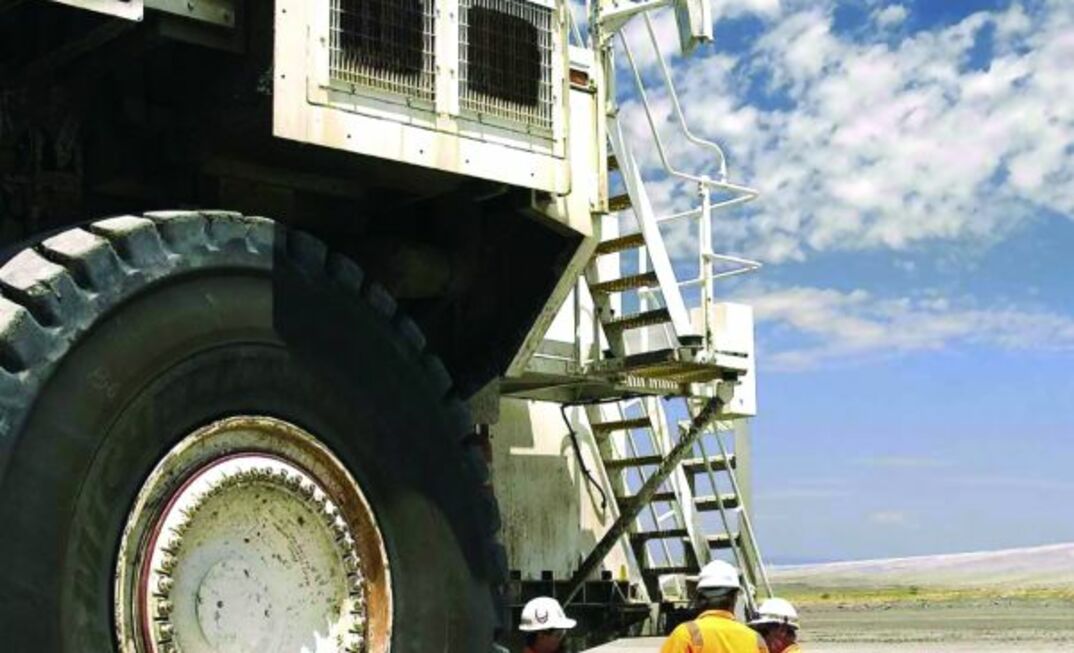Efficiency. Optimisation. We write about this a lot in Supply Side.
One way of clawing back a fall in resource prices is to trim the operational fat.
Unnecessary costs are first in the queue. Thiess and IBM have been looking in this direction.
For most of the past two years, they’ve been running a trial on predictive analytics at a coal mine in Australia’s east.
Predictive analytics analysed every scrap of data from the machine fleets operated there by Thiess Mining.
Thiess call it a bottoms-up approach. Not only does it harness the data produced by the machine itself – haul trucks, excavators etc – but it also examines a number of other factors.
Weather conditions, driver performance, haul load weights and ground conditions are all thrown into the mix.
From this, the Thiess-IBM collaboration feeds the data through an algorithm to produce an operational model for each machine.
If the truck is nearing a service interval or in need of repair, but is vital to the load-haul cycle, the predictive analytics model can create a schedule that keeps the machine in operation long enough to get the job done.
Thiess and IBM believe their system delivers greater efficiency and ensures that machines spend less time out of service, saving companies from costly breakdowns.
The companies explained: “IBM announced a new collaboration with Thiess, one of the world’s largest contract miners, to use big data to improve machine availability and operational productivity utilising predictive analytics and modelling technologies.
“This initial collaboration focuses on Thiess Mining haul trucks and excavators, and will help unify asset management and business operations.
“Unlike traditionally data-intensive industries such as banking or telecommunications, which rely on advanced information technology (IT) to drive operational performance, asset-intensive industries such as mining have typically not invested as much operationally in IT systems.
“Today, many organisations in natural resource industries rely heavily on either a ‘fix-it-when it-breaks’ approach or time-based scheduled maintenance techniques.
“These methods often result in unnecessary downtime, premature component replacements, extra expense and lost production. They also do not explicitly factor in an individual piece of equipment’s actual condition and performance capability.”
The companies added: “IBM Research and Thiess collaboration has been integrating current and historical machine sensor data, along with maintenance and repair, operational and environmental data to use as a basis for data-driven operational optimisation.
“Factors such as repair and inspection history, payload size, sensor-based component alerts, operator variability, weather and ground conditions are being used to construct models which assess and predict the life of discrete components and the overall health of a piece of equipment.
“This information will enable decision-makers to co-optimise maintenance and production decisions, resulting in better operational performance.”
Michael Wright is executive general manager Australian mining at Thiess. He said: “Analytics and modelling can offer great opportunities to improve our business, but we need to integrate them with our current processes in order to have a real bottom-line impact.
“Working with IBM to build a platform that feeds the models with the data we collect and then presents decision support information to our team in the field will allow us to increase machine reliability, lower energy costs and emissions, and improve the overall efficiency and effectiveness of our business.”
Early detection of even minor anomaly and malfunction patterns can be used to predict the likelihood of component failures and other areas of risk.
Both companies hope that this will dramatically increase the uptime of the equipment and improve Thiess’s ability to manage the full life of discrete components, overall machine health and the deployment of limited maintenance resources.
Matthew Denesuk, manager of Smarter Planet Analytics, IBM Research, said: “Natural resource industries are facing a perfect storm of demand growth, scarcity and rising costs that threaten their ability to deliver materials, fuel, and food to the world.
“By combining knowledge of the physical health of the equipment with information about how it needs to be used, we are able to know when something is going to go wrong and what can be done to fix the root problem before that occurs.”
A spokesman for Thiess and IBM added: “For example, in one mining scenario, several haul trucks that move coal may be reported to need maintenance, while at the same time a substantial order of product is due for delivery in 11 days.
“The predictive machine management system will be able to look at a variety of options for addressing this problem, and provide a decision maker with a model-based prediction that if the trucks are loaded no more than 85% of normal capacity and driven at no more than 80% of normal speed, the failure probability over the next 11 days would be minimal.
“This allows companies to avoid badly-timed and costly downtime at the sacrifice of only a minor, temporary decrease in throughput.”
Technology that enables mine managers to predict breakdowns across equipment fleets and take preventative measures protects the production process.
An increasing number of equipment manufacturers are following the same path and monitoring a machine’s vital signs to improve reliability.
It’s a simple concept; analyse when a machine is likely to fail and manage the situation until such time as its removal from service no longer has an impact on production.
Talk is cheap, of course. But the trial in eastern Australia suggests that Thiess and IBM have found a method of increasing efficiency and reliability.
























